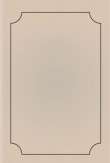You are here
قراءة كتاب Aphrodisiacs and Anti-aphrodisiacs: Three Essays on the Powers of Reproduction
تنويه: تعرض هنا نبذة من اول ١٠ صفحات فقط من الكتاب الالكتروني، لقراءة الكتاب كاملا اضغط على الزر “اشتر الآن"

Aphrodisiacs and Anti-aphrodisiacs: Three Essays on the Powers of Reproduction
Transcriber's note:
Old spellings and syntax in the French and English texts have not been corrected except the typos. The letter "m" with a macron have been replaced by "mm" as there is no unicode symbol or symbol combination to display this character satisfactorily. Footnote 224 is reference twice.
THREE ESSAYS ON THE POWERS
OF REPRODUCTION.

VOTIVE COLUMNS
Of the Ancient Oscans.
Aphrodisiacs and Anti-Aphrodisiacs:
THREE ESSAYS ON THE POWERS OF
REPRODUCTION;
WITH SOME ACCOUNT OF THE JUDICIAL "CONGRESS"
AS PRACTISED IN FRANCE DURING THE
SEVENTEENTH CENTURY.
By JOHN DAVENPORT.
Ubi stimulus, ibi fluxus.—Hippocrates.
LONDON:
PRIVATELY PRINTED.
1869.
PREFACE.
 HE reproductive powers of Nature were regarded by the nations of remote antiquity with an awe and reverence so great, as to form an object of worship, under a symbol, of all others the most significant,—the Phallus; and thus was founded a religion, of which the traces exist to this day, not in Asia only, but even in Europe itself.
HE reproductive powers of Nature were regarded by the nations of remote antiquity with an awe and reverence so great, as to form an object of worship, under a symbol, of all others the most significant,—the Phallus; and thus was founded a religion, of which the traces exist to this day, not in Asia only, but even in Europe itself.
That scarcely any notices of this worship should appear in modern works, except in the erudite pages of a few antiquarians may be accounted for by considering the difference of opinion between the ancients and the moderns as to what constitutes—modesty; the former being unable to see any moral turpitude in actions they regarded was the designs of nature, while the latter, by their over-strained notions of delicacy, render themselves, in some degree at least, obnoxious to the charge that, in proportion as manners becomes corrupt, language becomes more guarded,—modesty, when banished from the heart, taking refuge on the lips.
To supply, to some extent, this lacuna in our popular literature has been the object of the present work, in which, it is hoped, may be found much curious and interesting physiological information, interspersed with recherché and festivous anecdotes.
The text is illustrated by a few plates, drawn from antiquarian sources.
J. D.
LIST OF ILLUSTRATIONS.
Note.—As it was found impossible always to insert the illustrations opposite the explanatory text, the following List will assist the reader to those pages which explain the objects represented:—
| Plate | Described on page | |
| Frontispiece, Inscribed Votive Columns | Facing title | |
|
Of small size and of great antiquity; in use amongst the Oscan people, who were finally subjugated by the Sabines. |
||
| I. Figure 1, | 1, 2, 3 | |
|
From "Recueil d'Antiquités Egyptiennes, &c., par le Comte de Caylus." |
||
| " 2, |
do., different view |
1, 2, 3 |
| " 3, |
Two views of a double figure |
1, 2, 3 |
| " 4, |
Roman Priapus over a baker's door at Pompeii |
11 |
|
From "Musée secret de Naples." |
||
| II. Figure 1, | 1, 2, 3 | |
|
From M. Sonnerat's "Voyage aux Indes Orientales." |
1, 2, 3 | |
| " 2, |
Pan's Head |
9, 10 |
| III. Figure 1, | 5 | |
|
From the "Forgeais Collection of Plombs Historiques." |
5 | |
| " 2, |
ditto, a different view |


